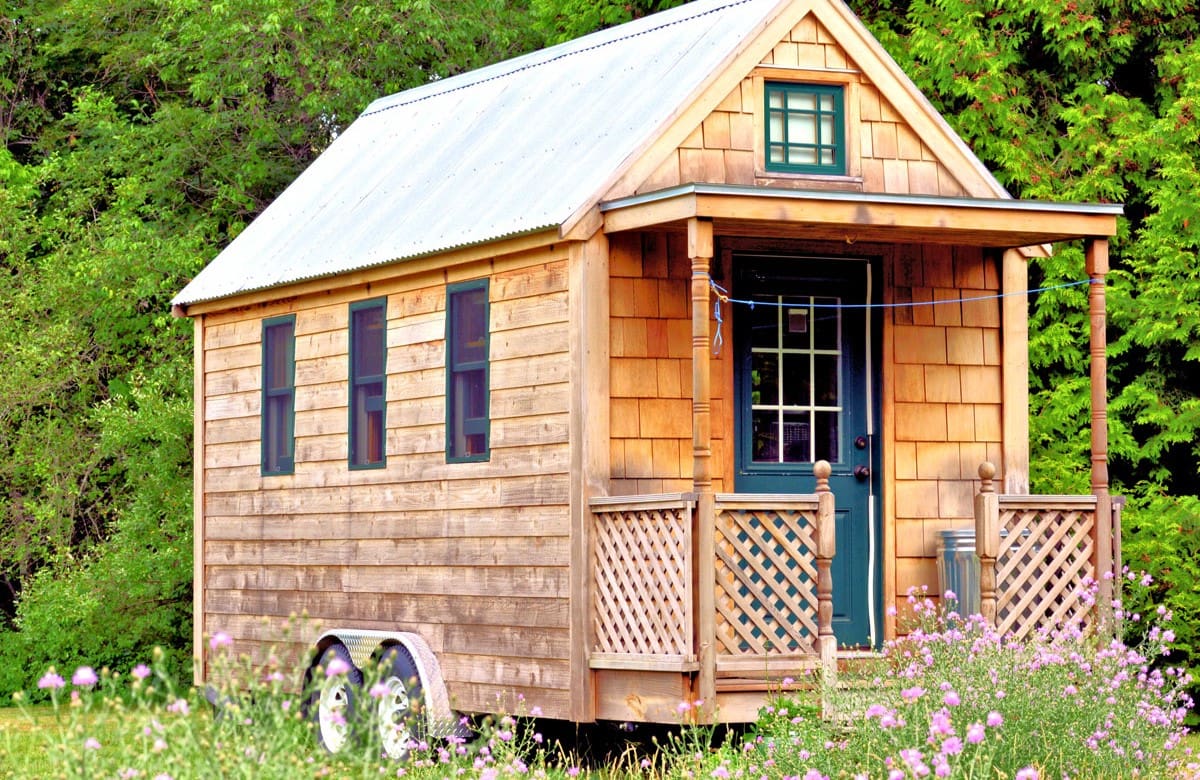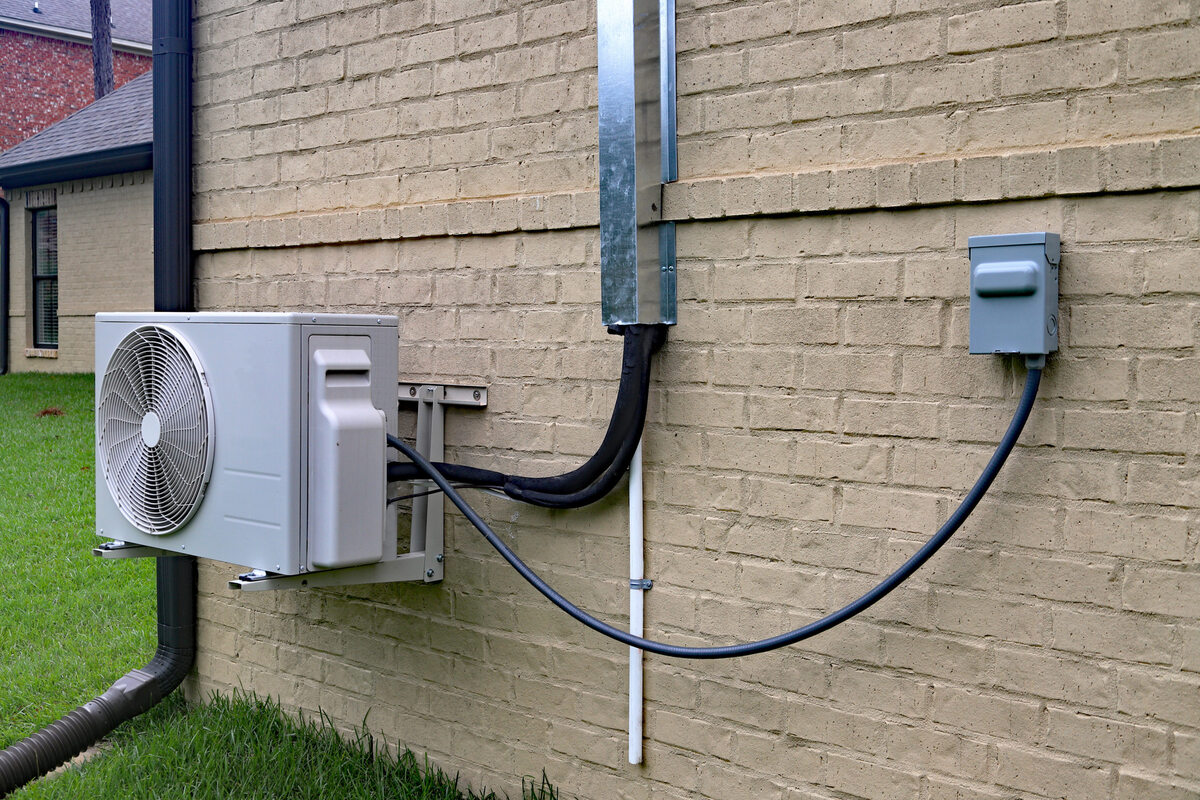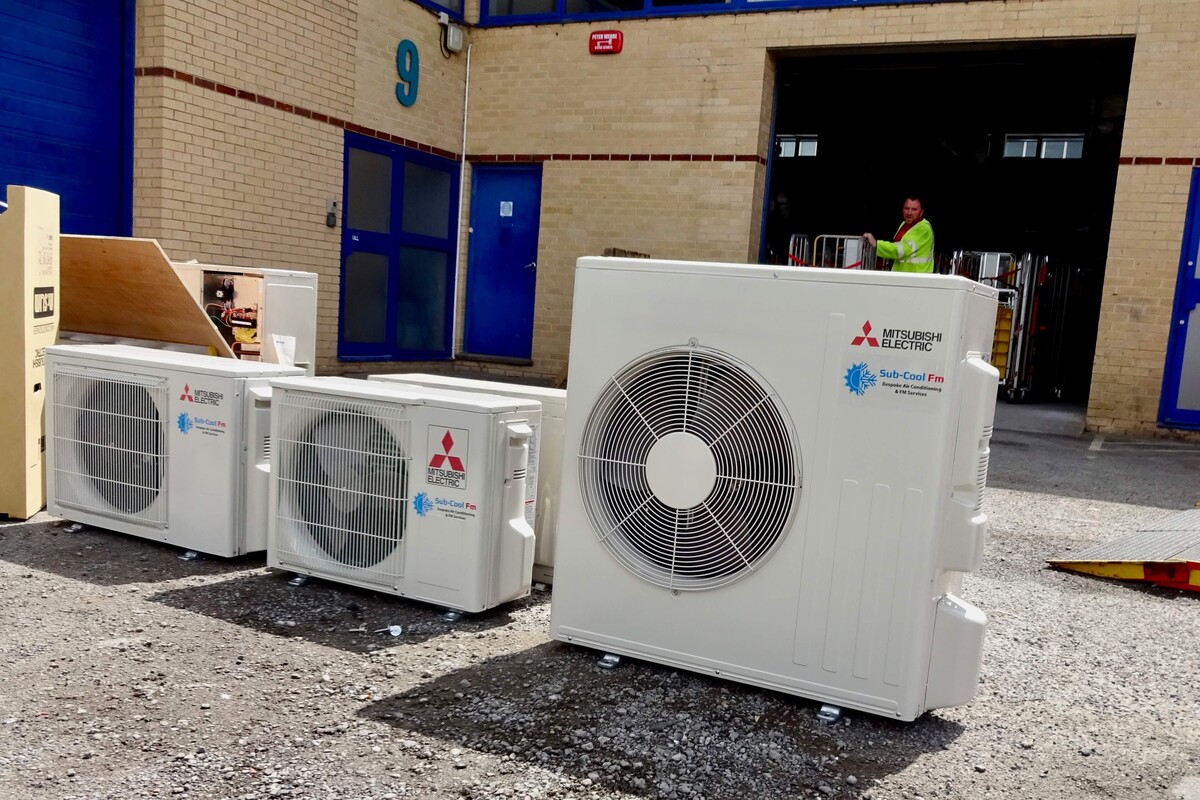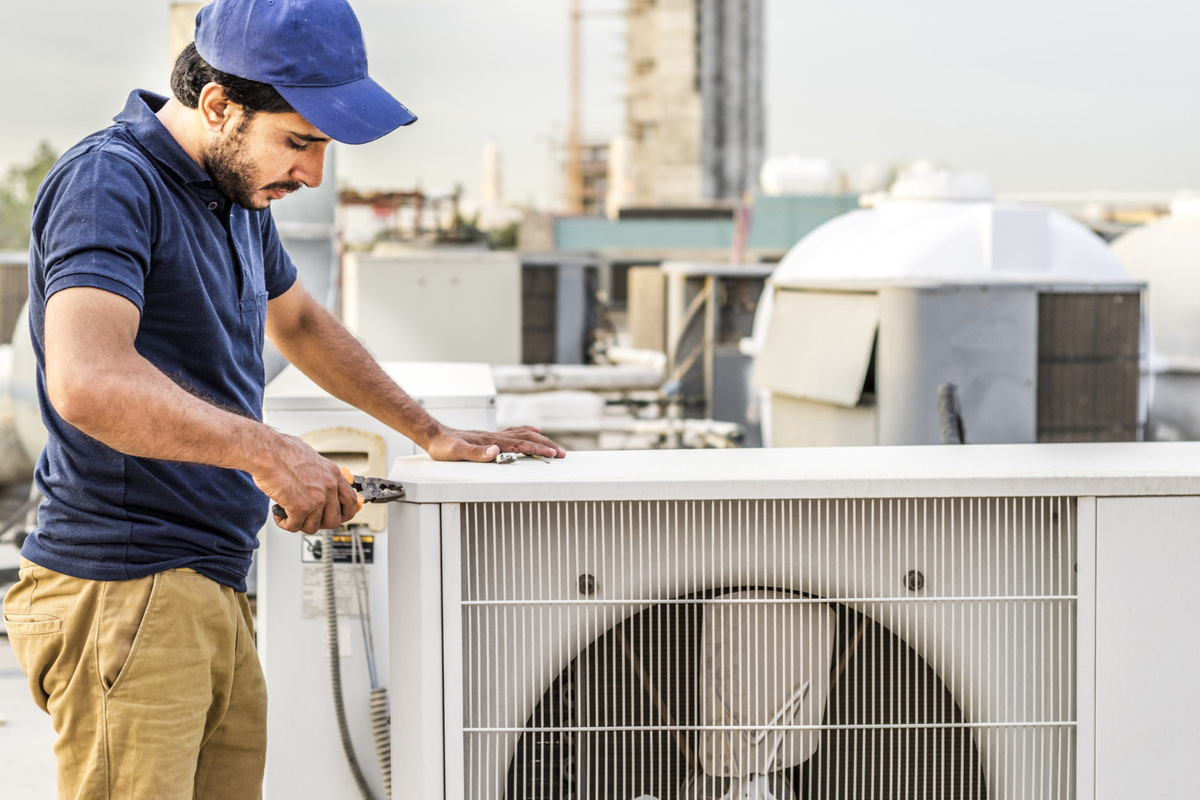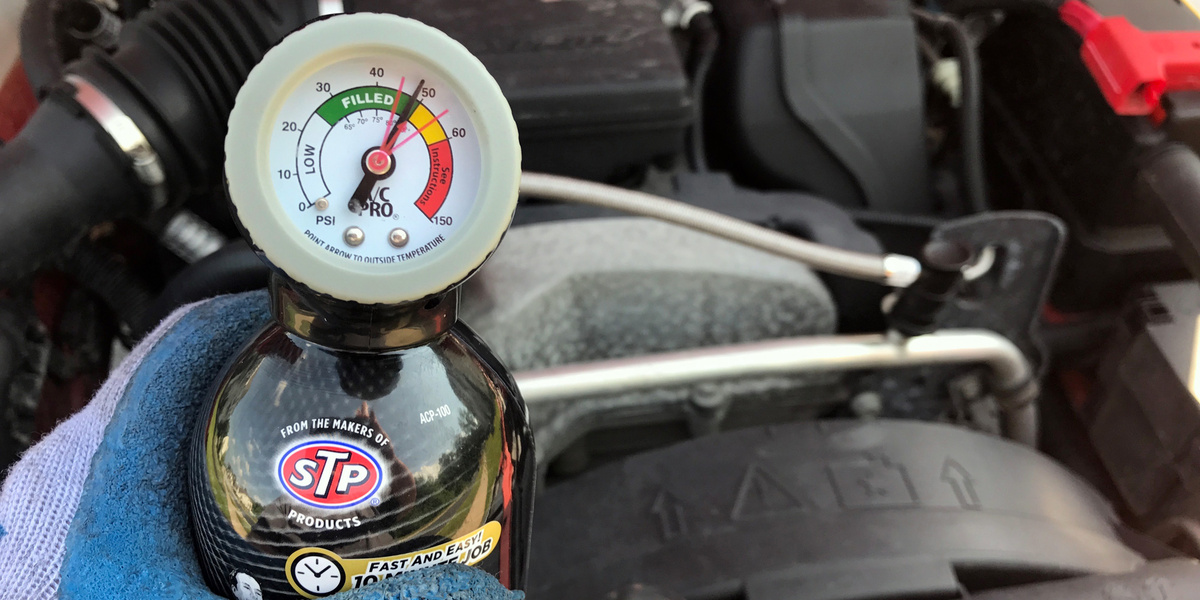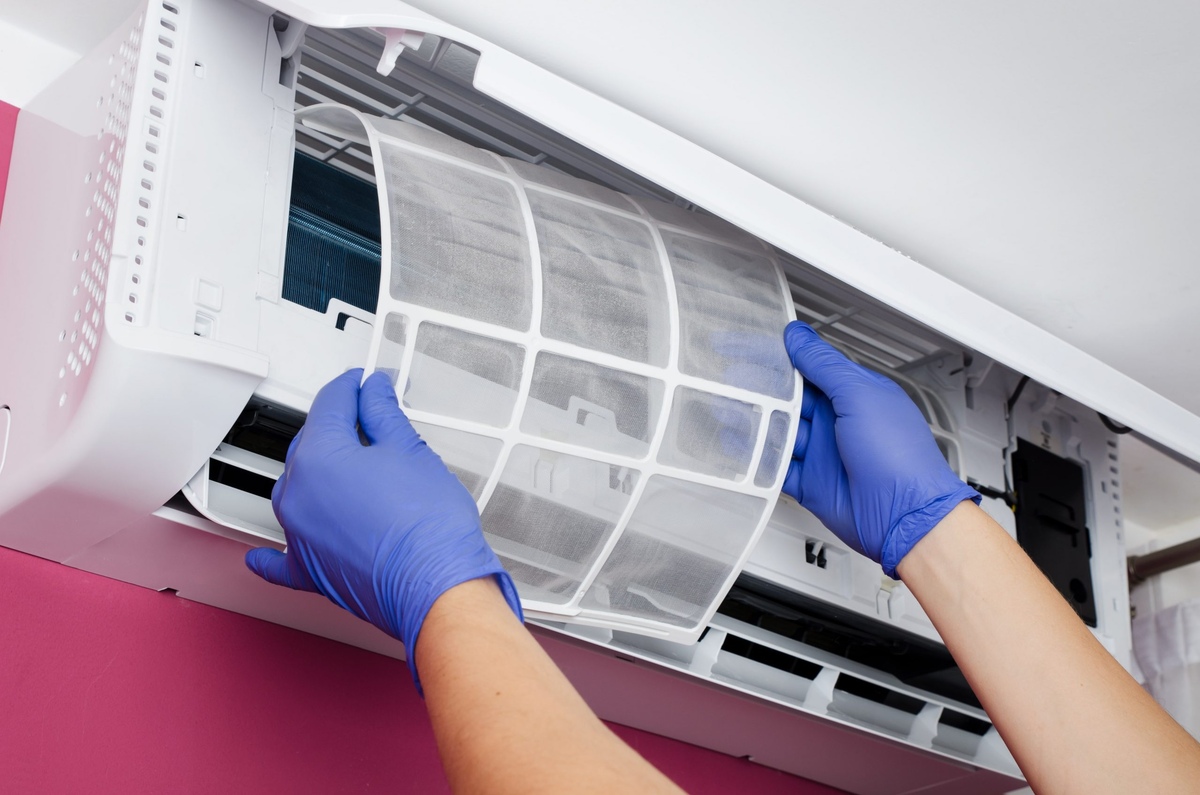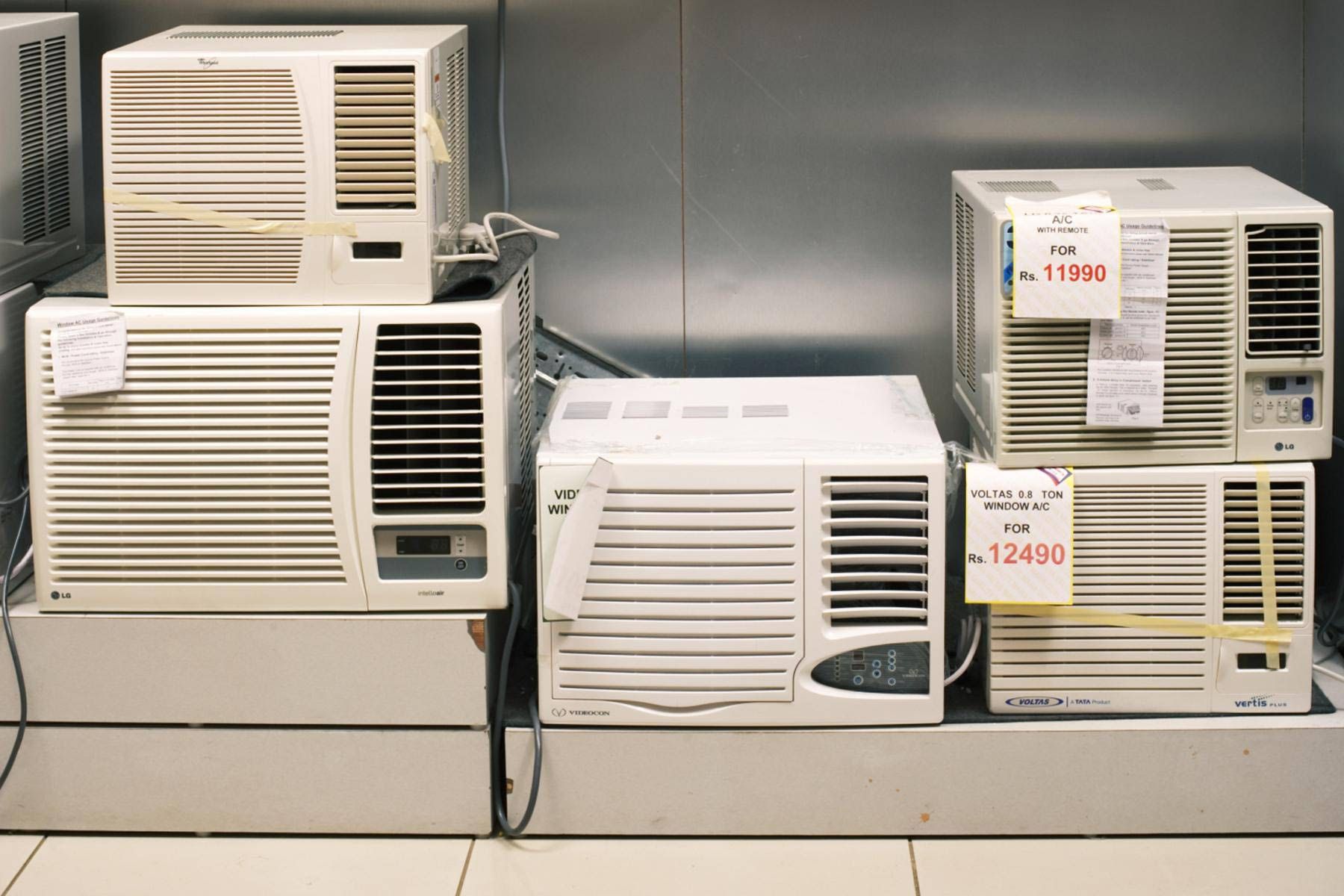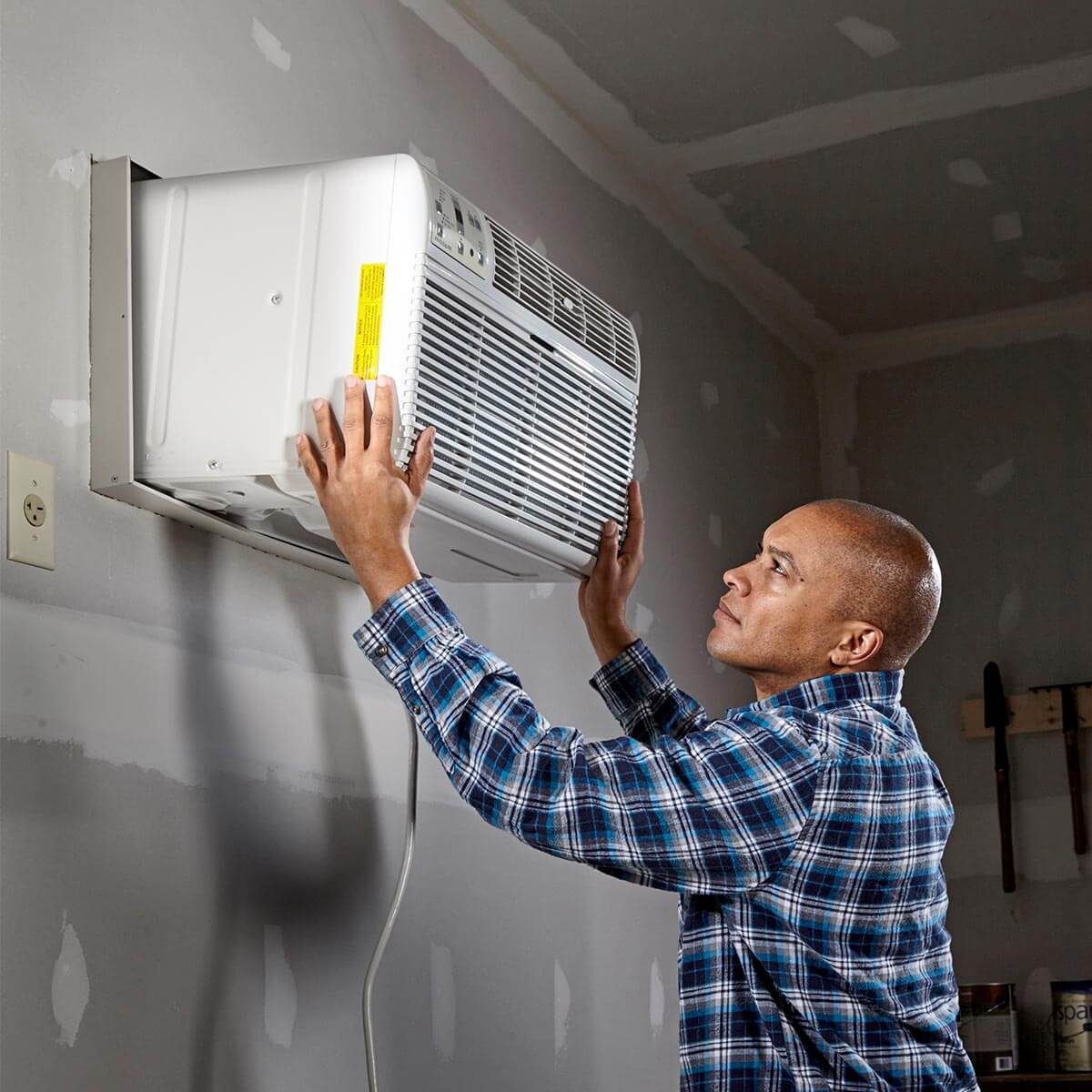Home>Home Maintenance>How To Close Air Conditioning Vents
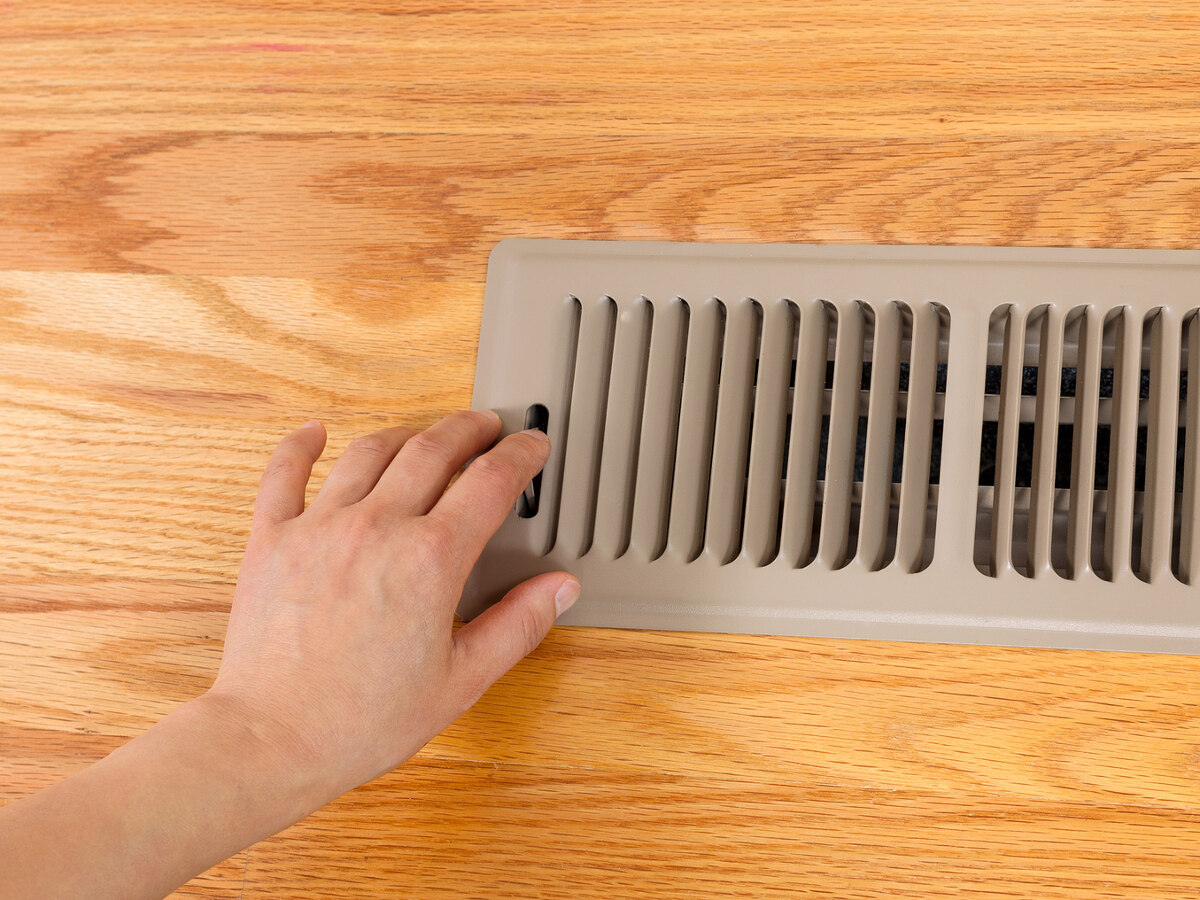

Home Maintenance
How To Close Air Conditioning Vents
Modified: March 6, 2024
Learn how to close air conditioning vents for effective home maintenance. Discover tips and techniques to optimize your HVAC system for energy efficiency.
(Many of the links in this article redirect to a specific reviewed product. Your purchase of these products through affiliate links helps to generate commission for Storables.com, at no extra cost. Learn more)
Introduction
Air conditioning is a vital component of the modern home, providing comfort and relief during hot summer months. However, there are situations where you may want to close off certain air conditioning vents in your home. This could be due to a variety of reasons such as trying to redirect airflow or adjusting the temperature in specific rooms. In this article, we will provide a comprehensive guide on how to properly close air conditioning vents, as well as common mistakes to avoid and tips for efficient vent closure.
Key Takeaways:
- Properly closing air conditioning vents is crucial for efficient cooling. Avoid fully blocking vents and closing too many, and prioritize regular maintenance and cleaning for optimal performance.
- Consider alternative cooling methods and a zoned HVAC system for precise temperature control. Balance airflow, prioritize usage, and maintain a comfortable and energy-efficient home.
Read more: How To Remove Air Conditioning Vents
Overview of Air Conditioning Vents
Air conditioning vents, also known as registers or grilles, are openings in your home that allow conditioned air to flow in and out. They are typically found on the walls or ceilings in different rooms. Vents play a crucial role in distributing cool air evenly throughout your home, ensuring a comfortable indoor environment. By properly closing air conditioning vents, you can control airflow and adjust room temperatures to suit your preferences.
Importance of Properly Closing Air Conditioning Vents
Closing air conditioning vents might seem like a simple task, but it is important to do it correctly to avoid potential issues. A balanced and well-regulated airflow is crucial for the efficient functioning of your HVAC (heating, ventilation, and air conditioning) system. Closing vents improperly can disrupt the airflow balance and lead to decreased system efficiency, increased energy consumption, and potential strain on the system.
Step-by-Step Guide on How to Close Air Conditioning Vents
Step 1: Gather Necessary Tools
Before you begin closing air conditioning vents, gather the necessary tools, including a ladder, screwdriver or key, and a soft brush or vacuum cleaner for cleaning the vents.
Read more: How To Balance Air Conditioning Vents
Step 2: Locate the Air Conditioning Vents
Take a moment to familiarize yourself with the layout of your home and locate all the air conditioning vents. Vents are typically found in each room but may also be present in hallways or other common areas.
Step 3: Assess the Airflow and Adjust the Vents
First, assess the airflow in each room to determine if closing vents is necessary. Make note of any rooms that consistently receive too much cool air or are not receiving adequate airflow. This will help you prioritize which vents to close and how much to close them.
Step 4: Close the Vents Properly
To close the vents, use a screwdriver or key to adjust the vent louvers. These are the slats or fins that control the airflow. Gradually close the louvers by rotating them until they are almost fully closed. Be careful not to force them shut, as this could damage the vent.
Step 5: Monitor the Temperature and Adjust as Needed
After closing the vents, monitor the temperature in each room over a few hours or days. If you find that a room is becoming too hot or stuffy, you may need to adjust the vents again to allow for more airflow. It may take some trial and error to find the right balance.
Remember, closing air conditioning vents should be done in moderation and with caution, as excessive vent closure can lead to negative consequences for your HVAC system. Assessing the airflow and making gradual adjustments are key to maintaining system performance.
Next, we will discuss common mistakes to avoid when closing air conditioning vents.
Key Takeaways:
- Properly closing air conditioning vents is crucial for efficient cooling. Avoid fully blocking vents and closing too many, and prioritize regular maintenance and cleaning for optimal performance.
- Consider alternative cooling methods and a zoned HVAC system for precise temperature control. Balance airflow, prioritize usage, and maintain a comfortable and energy-efficient home.
Read more: How To Remove Air Conditioning Vents
Overview of Air Conditioning Vents
Air conditioning vents, also known as registers or grilles, are essential components of your home’s HVAC system. They serve as the entry and exit points for conditioned air, allowing it to flow in and out of each room. Vents are typically located on walls, floors, or ceilings, strategically placed to distribute cool air evenly throughout the space.
The primary function of air conditioning vents is to regulate airflow and maintain a comfortable indoor environment. When the air conditioner is running, cool air is pushed through the vents and into the rooms, while stale air is simultaneously drawn back into the system for reconditioning. This continuous cycle ensures that each room receives an adequate supply of conditioned air.
Air conditioning vents come in various sizes and styles to suit different architectural designs and preferences. They are often made of materials like metal, plastic, or wood, designed to withstand the demands of consistent airflow. Vents may feature adjustable louvers or fins, allowing you to control the direction and volume of the airflow for optimum comfort.
In addition to delivering cool air, air conditioning vents also play a crucial role in removing excess moisture and improving indoor air quality. As conditioned air circulates, it helps to reduce humidity levels, preventing the growth of mold and mildew. Vents may also be equipped with filters to capture dust, dirt, and other airborne particles, enhancing the overall air cleanliness.
It’s worth noting that the placement and number of air conditioning vents in your home can vary depending on the size, layout, and structural design. High-traffic areas like the living room or kitchen often have larger vents to accommodate greater airflow, while smaller vents are sufficient for less frequently used rooms such as bedrooms or guest rooms.
Properly functioning air conditioning vents are essential for maintaining a comfortable and energy-efficient home. When vents are correctly adjusted and balanced, it helps to prevent hot or cold spots, ensures consistent cooling throughout the house, and optimizes the performance of your HVAC system.
In the next section, we will delve into the importance of properly closing air conditioning vents and the benefits it can offer.
Importance of Properly Closing Air Conditioning Vents
Closing air conditioning vents might seem like a simple task, but it is important to do it correctly to avoid potential issues. A balanced and well-regulated airflow is crucial for the efficient functioning of your HVAC (heating, ventilation, and air conditioning) system. Closing vents improperly can disrupt the airflow balance and lead to decreased system efficiency, increased energy consumption, and potential strain on the system.
One of the main reasons for closing air conditioning vents is to redirect airflow to specific areas of your home. For example, if you have a room that is consistently too cold or too warm, closing the vent in that room can help redirect more conditioned air to other parts of the house. This way, you can maintain a comfortable temperature throughout your home without wasting energy.
Proper ventilation is also important for maintaining good indoor air quality. By closing vents in rooms that are less frequently used, you can prevent unwanted dust, allergens, and pollutants from circulating throughout your home. This is particularly useful if you have family members with allergies or respiratory conditions.
Closing vents strategically can also help you save on energy costs. If you have rooms that are rarely occupied, such as guest rooms or storage areas, closing the vents can prevent unnecessary cooling or heating in those spaces. This reduces the workload on your HVAC system, allowing it to operate more efficiently and consume less energy.
Now that we understand the importance of properly closing air conditioning vents, let’s dive into a step-by-step guide on how to do it effectively.
Step-by-Step Guide on How to Close Air Conditioning Vents
Step 1: Gather Necessary Tools
Before you begin closing air conditioning vents, gather the necessary tools, including a ladder, screwdriver or key, and a soft brush or vacuum cleaner for cleaning the vents.
Read more: How To Balance Air Conditioning Vents
Step 2: Locate the Air Conditioning Vents
Take a moment to familiarize yourself with the layout of your home and locate all the air conditioning vents. Vents are typically found in each room, but they may also be present in hallways or other common areas.
Step 3: Assess the Airflow and Adjust the Vents
First, assess the airflow in each room to determine if closing vents is necessary. Make note of any rooms that consistently receive too much cool air or are not receiving adequate airflow. This will help you prioritize which vents to close and how much to close them.
Step 4: Close the Vents Properly
To close the vents, use a screwdriver or key to adjust the vent louvers. These are the slats or fins that control the airflow. Gradually close the louvers by rotating them until they are almost fully closed. Be careful not to force them shut, as this could damage the vent.
Step 5: Monitor the Temperature and Adjust as Needed
After closing the vents, monitor the temperature in each room over a few hours or days. If you find that a room is becoming too hot or stuffy, you may need to adjust the vents again to allow for more airflow. It may take some trial and error to find the right balance.
Remember, closing air conditioning vents should be done in moderation and with caution, as excessive vent closure can lead to negative consequences for your HVAC system. Assessing the airflow and making gradual adjustments are key to maintaining system performance.
Next, we will discuss common mistakes to avoid when closing air conditioning vents.
Read more: How To Close Ceiling Vents
Step 1: Gather Necessary Tools
Before you start closing air conditioning vents, it’s important to gather the necessary tools that will help simplify the process and ensure a smooth experience. Here are some tools you should have on hand:
1. Ladder: Depending on the location of your vents, you may need a ladder to safely access them. Make sure the ladder is stable and secure before ascending.
2. Screwdriver or Key: Most air conditioning vents have adjustable louvers that control the airflow. You will need a screwdriver or a special key, usually provided with the vent, to adjust the louvers.
3. Soft Brush or Vacuum Cleaner: Over time, dust and debris can accumulate on the vent grilles. Having a soft brush or a vacuum cleaner with a brush attachment will help you clean the vents and improve their functionality.
4. Flashlight: In case some vents are located in dimly lit areas, or if you need to inspect the vent openings more closely, a flashlight will come in handy.
5. Protective Gear: Although not strictly necessary, it’s a good idea to wear protective gloves and a mask while handling the vents, especially if they are dirty or if you have allergies or sensitivities.
By having these tools readily available, you’ll be able to complete the vent closing process efficiently and effectively. Now that you’ve gathered your tools, let’s move on to the next step: locating the air conditioning vents in your home.
Step 2: Locate the Air Conditioning Vents
To effectively close air conditioning vents, you need to locate them throughout your home. Vents are typically found in each room, but they may also be present in hallways or other common areas. Here’s how you can locate the air conditioning vents in your home:
1. Start with a Plan: Take a moment to familiarize yourself with the layout of your home. It can be helpful to have a floor plan or sketch of your house to reference as you locate the vents.
2. Check the Walls, Floors, and Ceilings: Walk through each room of your home and carefully inspect the walls, floors, and ceilings. Look for rectangular, square, or circular openings with grilles or registers where the air can flow in and out.
3. Pay Attention to Furniture Placement: Sometimes, vents can be partially or completely hidden by furniture or other objects within a room. Move furniture away from walls and check behind or underneath them to locate any hidden vents.
4. Look for Indicators on the HVAC System: If you have access to your HVAC system or furnace, there may be indicators or labels to help you identify the corresponding vents. Check for labels such as “Living Room,” “Bedroom,” or “Kitchen” on the ductwork leading to the vents.
5. Note the Number of Vents per Room: Make a mental note or jot down how many vents are present in each room. This will help you keep track of the vents you plan to close or adjust later on.
6. Observe the Differences in Vent Sizes: Vents in different areas of your home may vary in size. Larger vents are typically found in high-traffic areas or larger rooms, while smaller vents are usually found in smaller spaces such as bathrooms or closets.
By taking the time to locate all the air conditioning vents in your home, you will have a better understanding of the airflow distribution and be able to make more informed decisions when closing or adjusting the vents. Once you have successfully located all the vents, move on to the next step: assessing the airflow and adjusting the vents as needed.
Step 3: Assess the Airflow and Adjust the Vents
Before closing any air conditioning vents, it’s important to assess the airflow in each room and determine if adjustments are necessary. This step will help you identify any areas that may have imbalanced or insufficient airflow. Here’s how you can assess the airflow and adjust the vents accordingly:
1. Turn on the Air Conditioning: Start by turning on your air conditioning system and allowing it to run for a few minutes. This will ensure that conditioned air is flowing through the vents and into the rooms.
2. Walk through Each Room: Take a walk through each room and observe the airflow from the vents. Note any rooms that are receiving too much cool air or are not receiving adequate airflow. This could be indicated by rooms that feel excessively cold, warm, or stuffy.
3. Check for Hot or Cold Spots: Pay attention to any noticeable temperature differences as you move from room to room. Hot or cold spots can indicate airflow issues that may need to be addressed by adjusting the vents.
4. Listen for Unusual Noises: Listen for any unusual noises coming from the vents, such as whistling or rattling sounds. These noises could be a sign of restricted or blocked airflow and may require adjustments to the vents.
5. Use an Anemometer (Optional): If you want a more precise measurement of airflow, you can use an anemometer. An anemometer is a handheld device that measures airspeed. Simply hold it near the vent openings to measure the airflow rate. While not necessary, an anemometer can provide more accurate information for assessing airflow.
6. Adjust the Vents Gradually: Based on your assessment, make adjustments to the vents as needed. If a room is receiving too much cool air, try partially closing the vent to redirect airflow. Conversely, if a room lacks sufficient airflow, partially open the vent to allow more conditioned air to enter.
Remember to make gradual adjustments to the vents, as sudden and drastic changes can cause imbalances in the system. It may take some trial and error to find the right balance of airflow throughout your home.
By assessing the airflow and adjusting the vents accordingly, you’ll be able to optimize the distribution of cool air in your home and ensure a comfortable indoor environment. Having completed this step, proceed to Step 4: closing the vents properly.
Step 4: Close the Vents Properly
Once you have assessed the airflow and identified any rooms that require adjustments, it’s time to properly close the air conditioning vents. This step will allow you to control the distribution of conditioned air and redirect airflow to areas that need it most. Follow these guidelines to close the vents effectively:
1. Locate the Vent Louvers: Examine the vent and locate the vent louvers. These are the slats or fins that control the airflow. They are usually adjustable and can be found on the face of the vent.
2. Gradually Close the Louvers: Using a screwdriver or a specialized key (depending on the type of vent), gently rotate the vent louvers to close them. Start by closing the louvers partially and observe the impact on the airflow.
3. Maintain a Balanced Closure: It’s important to maintain a balanced closure when adjusting the vent louvers. Avoid closing all the louvers completely, as this can obstruct the airflow and put unnecessary strain on the HVAC system.
4. Avoid Forcing the Louvers Shut: When closing the vent louvers, be gentle and avoid forcing them shut. Forcing the louvers can lead to damage and compromise the functionality of the vent. If you encounter resistance, double-check if there are any obstructions that need to be cleared.
5. Test the Impact: After adjusting the vent louvers, observe the impact on the airflow in the room. Keep in mind that it may take some time for the changes to take effect, so monitor the temperature and comfort levels over a period of a few hours or days.
6. Make Adjustments as Needed: If the room still receives too much or too little airflow after closing the vent, make further adjustments by opening or closing the louvers accordingly. It may take some trial and error to find the optimal position for each vent.
By closing the vents properly, you can redirect conditioned air to the areas that need it most while maintaining a balanced airflow throughout your home. Remember to make gradual adjustments and regularly monitor the impact on the temperature and comfort levels in each room.
With Step 4 complete, we can move on to Step 5: monitoring the temperature and adjusting the vents as needed.
Read more: How To Close Vents In Basement
Step 5: Monitor the Temperature and Adjust as Needed
After closing the air conditioning vents, it’s important to monitor the temperature in each room and make further adjustments if necessary. This step allows you to fine-tune the vent closure to achieve the desired comfort levels throughout your home. Follow these guidelines to effectively monitor the temperature and make any needed adjustments:
1. Observe Temperature Changes: Monitor the temperature in each room over a period of a few hours or days. Note any rooms that are consistently too hot or too cold compared to your desired comfort level.
2. Adjust Vent Louvers: If a room is too hot, try opening the vent louvers slightly to increase the airflow. On the other hand, if a room is too cold, try closing the vent louvers slightly to reduce the airflow.
3. Give it Time: It’s important to allow sufficient time for the adjustments to take effect before making further changes. Small adjustments made gradually over time will help you achieve a balanced and comfortable temperature in each room.
4. Consider Other Factors: Keep in mind that the temperature in a room can be influenced by various factors, such as sunlight exposure, insulation, and the number of occupants. Take these factors into account when assessing temperature imbalances and making adjustments.
5. Regularly Check and Fine-tune: As the weather or your household needs change, regularly check the temperature in each room and make any necessary adjustments to the vent louvers. This will help maintain a comfortable and balanced airflow throughout your home.
By monitoring the temperature and adjusting the vents as needed, you can ensure optimal comfort in each room while maximizing energy efficiency. Regularly fine-tuning the vent closure will help you achieve the most efficient and effective distribution of conditioned air.
Now, let’s move on to discussing some common mistakes to avoid when closing air conditioning vents to ensure the best possible results.
Common Mistakes to Avoid
When closing air conditioning vents, it’s important to avoid the following common mistakes that can lead to negative consequences for your HVAC system:
1. Completely Blocking the Vents: Closing the vents too much or completely blocking them can disrupt the airflow balance and put strain on the system. Avoid fully closing the vent louvers unless absolutely necessary.
2. Closing Too Many Vents: Closing too many vents in your home can restrict the airflow and cause the HVAC system to work harder, potentially leading to increased energy consumption and reduced efficiency. Remember to keep a balanced closure and avoid closing vents unnecessarily.
3. Neglecting Regular Maintenance and Cleaning: Even when vents are closed, it’s essential to regularly clean and maintain them to ensure optimal performance. Dust and debris can accumulate on the vent grilles, obstructing airflow. Regularly clean the vents using a soft brush or vacuum cleaner.
By being mindful of these common mistakes, you can effectively control the airflow in your home and maintain the efficiency and performance of your HVAC system, while also maximizing comfort.
In the next section, we will provide some tips for efficiently closing air conditioning vents and optimizing your home’s cooling system.
Mistake 1: Completely Blocking the Vents
One of the most common mistakes when closing air conditioning vents is completely blocking them. While it may seem logical to fully close off a vent to redirect airflow or improve energy efficiency, doing so can actually cause more harm than good.
When vents are blocked entirely, it creates a buildup of pressure within the HVAC system. This increased pressure can lead to a range of issues, including decreased system efficiency, reduced airflow to other areas of the house, and potential strain on the system itself.
Here are some reasons why completely blocking vents is a mistake to avoid:
1. Disrupted Airflow Balance: Air conditioning systems are designed to work with balanced airflow. By blocking a vent entirely, you disrupt the natural airflow pattern, creating an imbalance throughout the system. This imbalance can result in hot or cold spots in the house, making some rooms uncomfortable while others remain insufficiently cooled.
2. Increased Energy Consumption: Blocking vents may seem like a way to save energy by reducing cooling in certain areas of the house. However, it actually causes the system to work harder to maintain the desired temperature. The increased workload can lead to higher energy consumption and potentially shorten the lifespan of the HVAC system.
3. Pressure Buildup and Damaged Ducts: Fully blocking a vent increases the pressure within the HVAC system. This elevated pressure can cause the ductwork to develop leaks or become damaged, leading to air leakage and decreased efficiency. In some cases, it may even lead to costly repairs or the need for duct replacement.
To avoid this mistake, it’s important to keep the vents partially open rather than completely blocked. This allows for proper airflow and maintains the equilibrium of the HVAC system. Adjust the louvers or fins to a partially closed position to redistribute conditioned air while maintaining adequate airflow throughout your home.
By avoiding the mistake of completely blocking the vents, you can ensure a well-balanced airflow, maximize energy efficiency, and prolong the lifespan of your HVAC system. Remember, moderation is key when it comes to adjusting and closing air conditioning vents.
In the next section, we will discuss Mistake 2: Closing too many vents, and how to avoid this common pitfall.
Mistake 2: Closing Too Many Vents
Another common mistake when closing air conditioning vents is closing too many vents throughout your home. While it may seem tempting to close off vents in unused rooms or areas, doing so can have negative consequences on your HVAC system’s performance and efficiency.
Closing too many vents restricts the airflow and disrupts the balance of your HVAC system, resulting in various issues. Here are some reasons why closing too many vents is a mistake to avoid:
1. Increased Air Pressure: Closing multiple vents increases the air pressure within the HVAC system. This can lead to strain on the blower motor and decrease the overall efficiency of the system. The increased air pressure may also cause air leaks, potentially leading to energy wastage and reduced cooling effectiveness.
2. Uneven Temperature Distribution: Closing too many vents can result in imbalanced temperature distribution throughout your home. The rooms with closed vents may become excessively warm or stuffy, while the rooms with open vents may become too cold. This temperature imbalance compromises the comfort levels in your living spaces.
3. Damaged Blower Motor: The blower motor in your HVAC system is responsible for pushing the conditioned air through the ductwork. When too many vents are closed, it increases the workload on the blower motor as it tries to overcome the increased air pressure. This increased strain can lead to premature motor failure, resulting in costly repairs or replacements.
To avoid this mistake, it’s crucial to keep a balanced closure of air conditioning vents. Only close the vents in rooms that are rarely used or not currently occupied. It’s advisable to gradually adjust the louvers or fins to partially close the vents rather than fully shutting them off.
Regularly assess the airflow and temperature in each room to ensure proper circulation and comfort. If you find rooms are consistently too warm or cold, consider alternative cooling or heating methods, or consult with an HVAC professional to optimize airflow and distribution.
By avoiding the mistake of closing too many vents, you can maintain the efficiency and longevity of your HVAC system while ensuring balanced and comfortable temperatures throughout your home.
In the next section, we will discuss Mistake 3: Neglecting regular maintenance and cleaning of air conditioning vents, and why it’s essential to avoid this oversight.
Closing air conditioning vents can help redirect airflow to other areas of the home. Use the levers on the vents to close them, but avoid closing too many vents as it can strain the system.
Read more: How To Close Vents In Crawl Space
Mistake 3: Neglecting Regular Maintenance and Cleaning of Air Conditioning Vents
One mistake that homeowners often make when it comes to air conditioning vents is neglecting regular maintenance and cleaning. The vents play a crucial role in maintaining proper airflow and ensuring the efficiency of your HVAC system. Failing to maintain and clean the vents can lead to various problems and compromises in performance. Here’s why neglecting regular maintenance and cleaning is a mistake to avoid:
1. Reduced Airflow: Over time, dust, dirt, allergens, and other debris can accumulate on the vent grilles, obstructing the airflow. This reduction in airflow decreases the effectiveness and efficiency of your HVAC system. It forces the system to work harder to distribute conditioned air, leading to increased energy consumption and potential strain on the system.
2. Impaired Air Quality: Unclean vents can release accumulated dust, allergens, and pollutants into the air. This compromises the indoor air quality, potentially exacerbating allergies, respiratory issues, and overall discomfort for you and your family.
3. Increased Risk of Malfunctions: Neglected vents can also contribute to the development of mold and mildew, particularly in humid areas. These microbial growths can cause unpleasant odors, damage the vents, and even affect the overall performance of your HVAC system. Moreover, a buildup of debris on the vent grilles can impede the proper functioning of the louvers, hindering your ability to adjust airflow as needed.
To avoid this mistake, it’s crucial to incorporate regular maintenance and cleaning of air conditioning vents into your home maintenance routine. Here are some tips to help you efficiently maintain and clean your vents:
1. Regularly Inspect the Vents: Take the time to visually inspect the vents throughout your home. Look for signs of dust buildup, excessive dirt, or any obstructions that might restrict airflow.
2. Clean the Vent Grilles: Use a soft brush or a vacuum cleaner with a brush attachment to gently clean the vent grilles. Move the brush or nozzle along the surface of the grilles to remove dust and debris. Regular cleaning helps maintain unobstructed airflow and improved indoor air quality.
3. Schedule Professional Duct Cleaning: Consider scheduling professional duct cleaning every few years. Professional technicians have specialized tools and equipment to thoroughly clean the entire ductwork system, ensuring optimal airflow and minimizing pollutants.
4. Maintain a Clean Environment: Regularly cleaning and dusting your home can help minimize the amount of debris that enters the ventilation system. Keep doors and windows closed when the air conditioner is running to prevent dust and outdoor allergens from entering.
Implementing these maintenance and cleaning practices will help ensure that your air conditioning vents remain clean and functional, maintaining the efficiency and overall performance of your HVAC system.
In the next section, we will provide tips for efficiently closing air conditioning vents to optimize your home’s cooling system.
Tip 1: Prioritize Rooms Based on Usage
When it comes to efficiently closing air conditioning vents, one helpful tip is to prioritize rooms based on their usage. By strategically deciding which rooms to close off, you can maximize energy efficiency and ensure comfort where it’s needed most. Here’s how to prioritize rooms based on usage:
1. Identify High-Priority Rooms: Start by identifying the rooms in your home that are frequently used and require consistent cooling or heating. These rooms typically include living rooms, bedrooms, and home offices. Prioritize keeping the vents open or partially open in these spaces to maintain a comfortable temperature.
2. Consider Occupancy Patterns: Take into account your family’s daily routines and occupancy patterns. If certain rooms are unoccupied for long periods, such as guest rooms or storage areas, you can close the vents in these spaces or partially close them to conserve energy.
3. Assess Specific Needs: Consider any specific needs of family members or unique characteristics of certain rooms. For example, if you have a home gym or a room with high heat-generating equipment, it may require additional cooling. Keep the vents open or partially open in these areas to ensure proper temperature regulation.
4. Mind the Seasonal Changes: Keep in mind that your prioritize rooms may change with the seasons. In summer, focusing on keeping the bedrooms and living areas cool may be crucial, while in winter, prioritizing well-heated bedrooms and common areas may be more important.
5. Adjust as Needed: Be flexible and willing to adjust your vent closures based on changing circumstances. As occupancy patterns or preferences change, you can modify the vents accordingly to adapt to the new requirements.
By prioritizing rooms based on usage, you can optimize airflow and ensure that energy is directed to the spaces that need it most, improving comfort and reducing energy wastage. Remember, the goal is to strike a balance between maintaining a comfortable environment and conserving energy.
Next, we will explore Tip 2: Utilize alternative cooling methods to complement the closure of air conditioning vents.
Tip 2: Utilize Alternative Cooling Methods
When closing air conditioning vents, it’s important to have alternative cooling methods in place to complement the vent closure and maintain a comfortable indoor environment. By utilizing alternative cooling methods, you can reduce the reliance on the air conditioning system and further optimize energy efficiency. Here are some effective alternative cooling methods to consider:
1. Ceiling Fans: Ceiling fans can help circulate the air in a room, providing a cool breeze that can make you feel more comfortable. Use ceiling fans in conjunction with closed or partially closed vents to enhance air circulation and create a pleasant cooling effect.
2. Portable Fans: Portable fans are versatile and can be moved around to different rooms as needed. They can provide direct airflow, helping to keep you cool and comfortable in specific areas of the house. Place fans strategically near open vents to assist in distributing conditioned air effectively.
3. Window Coverings: Utilize window coverings, such as blinds or curtains, to block out direct sunlight and prevent heat from entering your home. This can help reduce the need for excessive cooling in certain areas.
4. Natural Ventilation: Take advantage of natural ventilation by opening windows during cooler parts of the day or in the evening. This allows for fresh air circulation and can help cool down the interior without relying solely on the air conditioner.
5. Insulation and Sealing: Improve insulation and seal any air leaks in your home to prevent outside heat from infiltrating and conditioned air from escaping. Proper insulation and sealing can significantly reduce the cooling load on your HVAC system, making it more efficient.
6. Use of Shade: Utilize natural shade from trees or outdoor structures to help keep the area around your home cooler. This can have a positive impact on the overall cooling requirements indoors.
By incorporating these alternative cooling methods, you can reduce the workload of your air conditioning system, conserve energy, and enhance the comfort of your home. Remember to combine these methods with the strategic closure or partial closure of air conditioning vents for maximum efficiency.
In the next section, we will explore Tip 3: Consider a zoned HVAC system, which can provide even more precise control over temperature regulation and airflow distribution.
Tip 3: Consider a Zoned HVAC System
If you’re looking for more precise control over temperature regulation and airflow distribution, considering a zoned HVAC system is a valuable tip. A zoned HVAC system divides your home into different zones, allowing you to independently control the temperature in each area. Here’s why you should consider a zoned HVAC system:
1. Enhanced Energy Efficiency: With a zoned HVAC system, you have the ability to cool or heat only the areas of your home that are in use. This targeted approach eliminates unnecessary conditioning of unoccupied spaces, resulting in higher energy efficiency and potential cost savings on your energy bills.
2. Personalized Comfort: A zoned system allows you to customize the temperature settings in different zones to accommodate individual preferences and needs. You can prioritize cooling or heating specific areas, ensuring the highest level of comfort for everyone in your home.
3. Better Airflow Control: Zoned HVAC systems provide independent control over airflow to each zone. You can adjust the vents and dampers in each zone, directing conditioned air precisely where it is needed. This optimizes airflow distribution, eliminates hot or cold spots, and ensures consistent comfort throughout your home.
4. Reduced HVAC Wear and Tear: With a zoned system, your HVAC system operates more efficiently, as it doesn’t have to cool or heat the entire home uniformly. The reduced workload and runtime of the system can extend its lifespan and reduce the likelihood of breakdowns or costly repairs.
5. Flexibility in Zoning: Zoned systems offer flexibility in designating zones based on your specific needs and usage patterns. You can create zones based on different floors, rooms with high thermal gain, or areas with varied heating and cooling requirements.
While installing a zoned HVAC system may require an upfront investment, the long-term benefits in terms of energy efficiency, comfort, and system longevity can make it a worthwhile investment.
In conclusion, closing air conditioning vents properly is essential for optimizing the airflow and achieving efficient cooling in your home. By following the step-by-step guide, avoiding common mistakes, and implementing the tips discussed, you can effectively control and regulate the airflow to different areas of your home. This will enhance energy efficiency, improve comfort levels, and reduce the strain on your HVAC system.
Remember, moderation is key when adjusting or closing vents, and regular maintenance and cleaning of the vents are crucial for maintaining optimal performance. Additionally, considering alternative cooling methods and exploring zoned HVAC systems can further enhance your ability to efficiently manage indoor temperatures.
By applying these guidelines and choosing the right cooling strategies for your home, you can create a comfortable and energy-efficient living environment throughout the year.
Frequently Asked Questions about How To Close Air Conditioning Vents
Was this page helpful?
At Storables.com, we guarantee accurate and reliable information. Our content, validated by Expert Board Contributors, is crafted following stringent Editorial Policies. We're committed to providing you with well-researched, expert-backed insights for all your informational needs.
